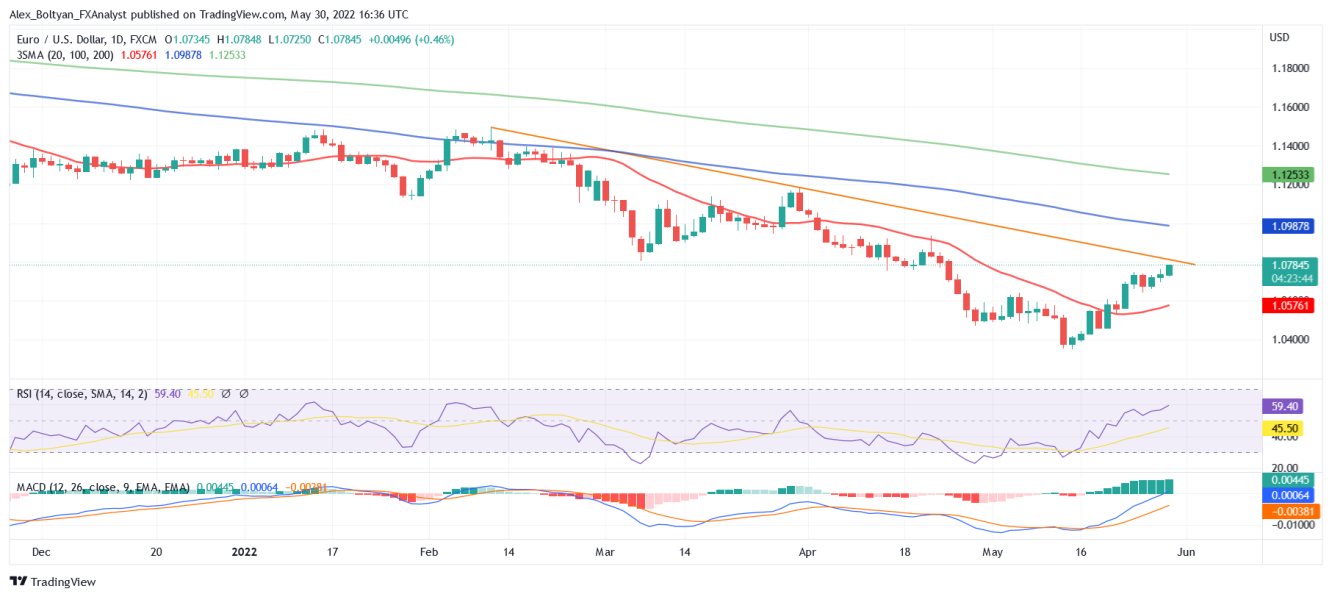The EUR/USD pair started the week on the right foot, recording its third consecutive daily gain, underpinned by the dollar's pullback across the board. The euro posted a fresh five-week high at 1.0780 and remains close to that level at the start of the American session.
The dollar, measured by the DXY index, posted its lowest level since Apr. 25 at 101.35 on Monday, while the United States 10-Year bond yield remains limited at around 2.74%. Activity in the U.S. markets is limited due to Memorial Day. Investors will now be expecting the nonfarm payrolls report to be released on Friday.
Meanwhile, inflation data from Germany showed that May's HICP grew 8.7% year-on-year, beating the market forecast of 8% and fueling expectations that the European Central Bank will have no choice but to raise interest rates sooner rather than later.
In addition, the fact that major Chinese cities began to relax COVID-19 controls over the weekend helped risk sentiment, benefiting riskier assets to the detriment of the greenback.
From a technical perspective, the EUR/USD maintains a short-term bullish bias, according to the indicators on the daily chart. Both the RSI and the MACD remain on positive ground, while the latter signals strong buying interest.
To the upside, EUR/USD faces immediate resistance at the 1.0800-10 zone, where the psychological level converges with a descending trend line from the February high. A break above this area could improve the short-term outlook for the EUR/USD and push it towards the 1.0900 area.
On the other hand, the 1.0700 psychological level is the first support in line, followed by 1.0600 and the 20-day moving average, currently at around 1.0580.


